Text
Here is some text
Lorem ipsum dolor sit amet, cu qui inermis philosophia, pro ei animal scribentur. Mea cu quodsi dissentias interesset, ne quo nisl malis ponderum. Erat impetus copiosae vix ne, ad dolor oratio graecis mel. Falli mnesarchum sed in, an sed aperiam intellegat temporibus, te nobis integre qualisque per. Ne eum dicit tantas, pro sanctus liberavisse an, graeci atomorum mnesarchum per ad. Pro ex simul ubique impedit.
Ipsum maiestatis vix in, an impetus vocibus sed. Oporteat persecuti interesset ei nam, eam quaeque prodesset ei, te nobis tation ullamcorper quo. In nam idque offendit, eros labores epicurei ex vim. Id esse fabellas conceptam ius. Ea nam amet ignota primis, viderer euismod tibique ex est. Brute legendos eleifend usu id, euismod gloriatur sententiae pro an.
Magna tritani laoreet an est, ignota invenire inimicus pro te, quando ignota deterruisset ea vel. Senserit vituperatoribus eu sea. Habeo adhuc cum ei, duo etiam error an. Consul platonem splendide ad his, his ea noster deserunt. Ei veniam verterem mea, ut labitur sanctus sit.
Nibh melius quo et, impetus incorrupte constituam at est. Cum possit offendit ei. Eum audiam audire appetere cu. Dolorum constituto intellegebat ne sea, cu alia epicurei adolescens vix.
Ex vix albucius insolens. Duo aperiri prodesset id, mei an pertinacia definitionem. Alii nonumes moderatius ei mea. His ne partiendo deseruisse.
1 note
·
View note
Text
Another excellent article
Forensic Friday: Trepanation (or trepanning) is a surgical intervention in which a hole is drilled or scraped into the human cranium. The hole is made to expose the dura mater as a way to treat intracranial diseases, or to release pressure.
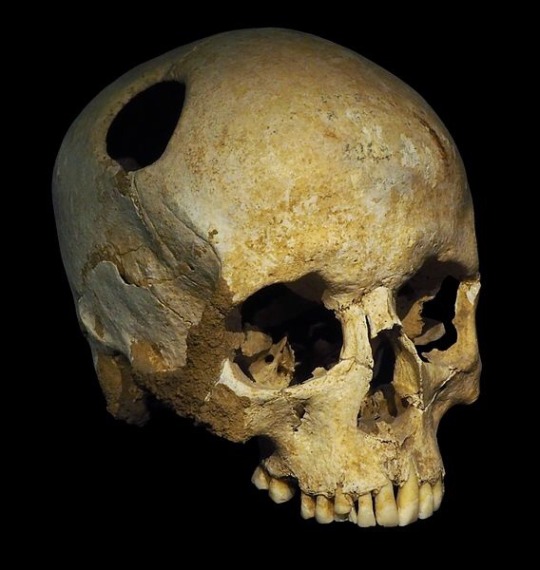
Image Source: Rama. Trepanated skull of a woman-P4140363-black. Wikimedia Commons.
Trepanation is one of the oldest surgical procedures with archaeological evidence.
Many prehistoric, and premodern patients had signs of bone healing, this means that many of these patients survived the surgery. Most of the crania with trepanation belong to adult males, but women and children also had the procedure done. In the New World, trepanation is commonly found among the Andean civilizations, and also in Mesoamerica.
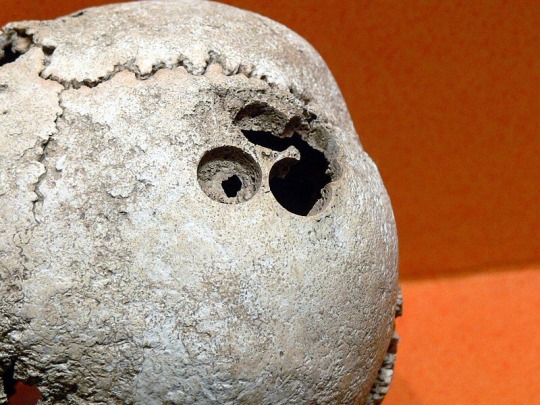
Image Source: Wolfgang Sauber. Monte Albán - Trepanierter Schädel 2. Wikimedia Commons.
630 notes
·
View notes
Photo

Life sucks a lot less when you add mountain air, a campfire and some peace and quiet. — Brooke Hampton 📷: @ryderkishi (at Mt. Baker)
https://www.instagram.com/p/BtyvVwRnonB/?utm_source=ig_tumblr_share&igshid=19z2w3zlgwgt3
222 notes
·
View notes
Text
Nice article
Preserving Fossil Treasures: Eocene Fishes from Monte Bolca, Italy
By Linsly Church
In 1903, Carnegie Museum of Natural History purchased an enormous private fossil collection from the Baron Ernest de Bayet of Brussels, Belgium. Over a 40-year period the Baron had amassed a collection comprising tens of thousands of individual fossils. At age 65 he married a much younger woman and sold the collection to fulfill her dream of having a house on the shore of Italy’s Lake Como. Within the collection are fossils from all over Europe. Fossils from Italy include the Monte Bolca fish collection, which contains about 290 beautifully-preserved specimens that date to about 50 to 49 million years ago, early in the Eocene Epoch.
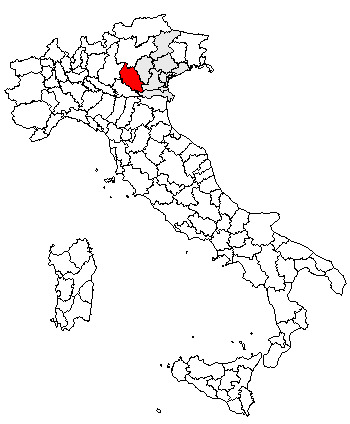
The province of Verona (in red) in Italy, where the Monte Bolca site is located.
One quarry at Monte Bolca has been owned by the same family for almost 400 years. It is known as the Pesciara, meaning the fishbowl, because many of the marine fossils found there are those of fishes. Because the preservation is so good in some layers of limestone, the site is considered a Lagerstätte. A Lagerstätte is a site that contains exquisitely-preserved fossils, typically representing a diversity of organisms. At Monte Bolca, some fishes and other creatures have preserved internal organs and even skin pigmentation, the result of an anoxic (oxygen-poor) environment that hindered decay and scavenging. The fossil site also differs from most others in that it is an underground mine with tunnels instead of a typical open quarry.


Two of Carnegie Museum of Natural History’s most spectacular ~50 million-year-old fossil fishes from Monte Bolca, Italy. Top: specimen number CM 4369, belonging to the moonfish Mene rhombea. Bottom: specimen CM 4467, belonging to the spadefish Exellia velifer. Note the dark stains in the eye sockets, which are vestiges of the original eye pigments of these ancient fishes.
Carnegie Museum of Natural History’s collection of fishes from Monte Bolca is currently undergoing conservation. In the past, the museum’s Vertebrate Paleontology collection was housed on open shelves in rooms with poor air filtration systems, resulting in soot from the local steel industry building up on the fossils. In recent years, the museum has installed an HVAC system in the Vertebrate Paleontology collection rooms, which has greatly reduced the particulates that make it into these rooms and onto the specimens. In the years since these measures were taken, we in Vertebrate Paleontology have commenced a general cleaning of our specimens, starting with our fishes from Monte Bolca.
To clean the specimens, we use a soot sponge (or chemical sponge), which is also used by restoration companies to clean after fires. “Chemical sponge” is a slightly misleading name because there are no chemicals added to the sponge. It is made of vulcanized rubber and has tiny pores on its surface that collect fine soot particles without depositing chemicals on the fossil. Therefore, there is no need for water or additional solvents when using these sponges. Wet cleaning of soot can cause staining on the surface that is being cleaned so it is very important to use dry cleaning methods such as chemical sponges. In some cases, the soot on the specimens is so dense that it is obvious where cleaning has taken place.
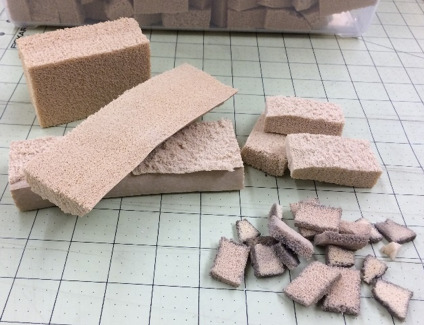

Before and after: clean soot sponges, prior to use (top); dirty soot sponges, after use (bottom) (with the source of the soot—a newly cleaned fossil fish from Monte Bolca—in the background).


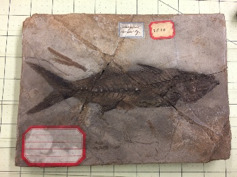

Evolution of a fish, roughly 50 million years after the fact. From top to bottom, the same fossil fish specimen from Monte Bolca (CM 4530, Carangopsis dorsalis) in four successive stages of cleaning.
Once the specimens have been cleaned, repairs are made as needed and labels are reattached if they are delaminating from (or falling off of) the specimen. Then, storage mounts are created for specimens as needed using archival materials. These materials are made specifically to be as neutral or inert as possible so as not to give off gases that could react harmfully with the specimens. Storage mounts are important because they reduce the amount of times someone needs to touch the specimen—which, in turn, reduces breakage—and protect the specimen from vibration when the compactors in which it is housed are opened and closed. These measures will help to protect the integrity of the specimens for years to come.
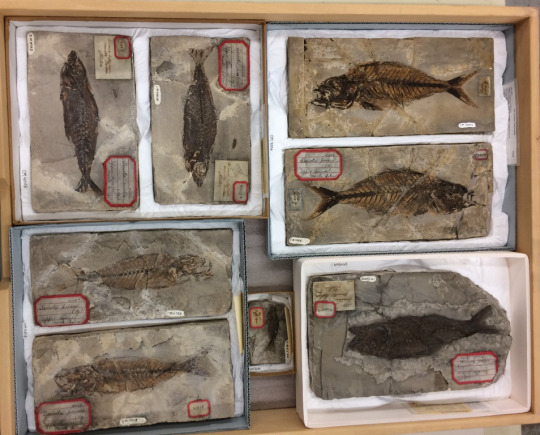
A drawer full of recently-cleaned Monte Bolca fishes in their new storage mounts.
Linsly Church is the curatorial assistant for the Section of Vertebrate Paleontology at Carnegie Museum of Natural History. Museum employees are encouraged to blog about their unique experiences and knowledge gained from working at the museum.
320 notes
·
View notes


